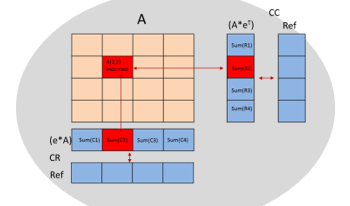
With artificial-intelligence (AI) becoming the mainstream approach to solve a myriad of problems across industrial, automotive, medical, military, wearables and cloud, the need for high-performance, low-power embedded devices are stronger than ever. Innovations around designing an efficient hardware accelerator to perform AI tasks also involves making them fault-tolerant to work reliability under varying stressful environmental conditions. These embedded devices could be deployed under varying thermal and electromagnetic interference conditions which require both the processing blocks and on-device memories to recover from faults and provide a reliable quality of service. Particularly in the automotive context, ASIL-B compliant AI systems typically implement error-correction-code (ECC) which takes care of single-error-correction, double-error detection (SECDED) faults. ASIL-D based AI systems implement dual lock step compute blocks and builds processing redundancy to reinforce prediction certainty, on top of protecting its memories. Fault-tolerant systems take it one level higher by tripling the processing blocks, where fault detected by one processing element is corrected and reinforced by the other two elements. This becomes a significant silicon area adder and makes the solution an expensive proposition. In this paper we propose novel techniques that can be applied to a typical deep-learning based embedded solution with many processing stages such as memory load, matrix-multiply, accumulate, activation functions and others to build a robust fault tolerant system without linearly tripling compute area and hence the cost of the solution.